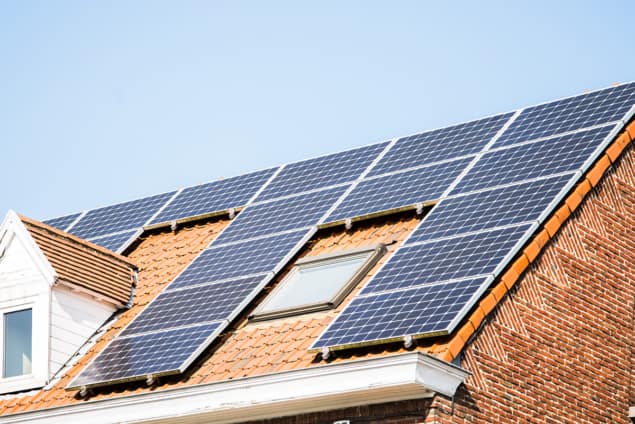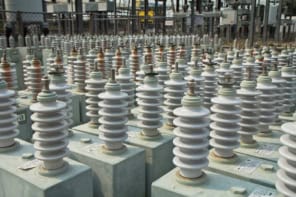
The UK government has confirmed that its Feed-In Tariff (FiT) support system for small renewable energy projects will end next spring. That will hit consumers who have installed PV solar and used the FiT system payments to offset the investment costs, which were quite large initially, but have now fallen as PV has matured and got cheaper. The Department of Business, Energy and Industrial Strategy (BEIS) now says that “consumers should not be expected to support sectors indefinitely and that as costs fall, so too should support”. So the whole FIT system will be closed to new applicants.
The FiT system was agreed in 2008 by the last Labour government, after strenuous lobbying from greens, who pointed to how successful FiTs had been in the rest of the EU, in Germany especially, enabling them to deploy renewable capacity quickly and at relatively low cost. Like the German system, the UK FiT, initially called “clean energy cash back”, offered guaranteed payment for each MWh of green energy produced. However, unlike in Germany, the UK FiT was limited to small projects. PV solar was the main beneficiary and after its launch in 2010, it expanded quite rapidly, faster than expected, with many so-called domestic “prosumers” starting to generate their own power. More joined in as the cost of PV began to fall, in part due to the success of FiTs in building markets across the EU.
That success, however, proved to be a problem, since the cost of the FiT scheme is paid by all consumers via a surcharge on their bills, and that surcharge began to rise as more projects emerged. Now that will end. It will not just affect solar. Small wind and hydro projects also benefitted from the FiT, along with some small biogas-CHP projects, and like PV, they too will all now have to struggle along unaided.
The end of the FiT leaves PV solar a little adrift.
Dave Elliott
This is not a sudden decision. It was what had emerged from the long and bitter battle over the FiT, starting in 2011 when, responding to the boom in domestic PV up-take, energy minister Greg Barker said: “We must reduce the level of FITs for solar panels as quickly as possible, to protect consumer bills and to avoid bust in the whole Feed-in Tariff budget”.
The initially-proposed major cuts were resisted, with Friends of the Earth, Solar Century and HomeSun winning support for a stay from a High Court Judge, but after further rounds of consultation and some minor concessions and delays, in 2015 significant cuts went ahead, with the best PV price (for under 10 kW) being cut to 4.39 p/kWh. A huge jump from the top price of 43.3 p/kWh that retrofit PV projects initially received. What’s more, the government warned that “the scheme will remain under review to ensure it continues to achieve its objectives until generation tariffs end in 2019”.
That is what is now being enacted – a full shutdown. The renewables lobby was obviously not happy, especially since there did not seem to be any clear proposed replacement. RenewableUK’s executive director Emma Pinchbeck, said the confirmation that “there will be no replacement for the feed-in tariff is a major blow to small-scale renewables in the UK. The government has known the FIT would be closing for three years and the fact that they are only now beginning the conversation about new policies is far too little, far too late.”
A total cut does seem a little drastic. The initial “production” tariffs offered to self-generating “prosumers” for the power they generated and used were quite lucrative, and they were also able to sell any excess power they generated back to the grid via an export tariff, initially set at 3 p/kWh, later raised to 4.5 p/kWh. You can see why the “production” tariff (initially up to 43.2 p/kWh) was provocative and had to be cut, but the export tariff was less so, and surely provided a useful system function – topping up the grid. However, BEIS now says that “we do not believe that the current FiT flat rate export tariff aligns with government’s vision for the future, given our desire to move towards fairer, cost-reflective pricing and the continued drive to minimise support costs on consumers”. So that goes too.

UK renewables: a ‘hostile environment’?
The end of the FiT leaves PV solar a little adrift. Costs are now much lower, but still too high for many consumers to afford unaided by an export tariff. Large grid-linked PV projects are more economically viable, but the government has blocked large solar projects from getting support from the Contract for Difference (CfD) scheme. Indeed, worried about the escalating cost, it has suspended all new green levy support until 2025, apart from one last series of CfD rounds, which are capped at £557 million and likely to be just for offshore wind.
Some large solar farm projects are nevertheless trying to press ahead without subsidy, including a 320 MW scheme in Kent. In theory, new peer-to-peer trading arrangements may pop up to allow smaller schemes to get going as part of new flexible smart-grid developments. BEIS has consulted on that but that sort of thing, although interesting, may be some way off in the UK (though maybe not Germany). Something may yet emerge from the BEIS consultation, but the Solar Trade Association chief executive officer Chris Hewett, said: “There is real dismay that there is now a serious and needless policy gap between the end of FITs and the start of the new regime.”
Were FiTs a good idea? There were issues of social equity. The prosumers were subsidized by all the other consumers and getting a quite good return. Indeed, given the low rates on investment savings offered by banks, this was one of the few personal investment options that still offered reasonable earnings. Some said that it was inequitable for a rich minority to in effect be subsidized by the poorer majority, but it did lead to a rapid expansion of domestic-scale PV, with the prosumers providing the capital. However, the other consumers had involuntary been tapped to help them, and they got no benefits.
Nevertheless, FiTs did work to deliver capacity, around 4.8 GW of PV in the UK, added to that from the larger projects initially supported by the Renewables Obligation (RO) and CfD, making 12 GW in all. Arguably within this, the FiTs cost less than the UK’s preferred market-competition-based systems like the RO. That was because FiTs provided guaranteed payments fixed at defined although reducing levels years ahead, making it easy for investors to borrow money for new projects at low interest rates. By contrast, the UK’s RO system was based on “certificate trading”, and the market value of the Renewable Obligation Certificates involved was unpredictable, so that project developers had to pay higher interest rates to fund new projects. So they built fewer of them and they had to charge consumers more for the power. For example, in 2005/6 the UK’s RO system cost consumers 3.2 p/kWh whereas in 2006 the German FiT only cost consumers 2.6 p/kWh, for much more capacity.
That comparison was mainly for wind projects, whereas PV, pushed by the FiT in Germany later, started out being much more expensive. Nevertheless, the FiT system resulted in a PV boom across the EU, with the result being escalating pass-through cost to consumers. So the FiTs were cut back, as in the UK, and, across the EU, they are being abandoned in favour of competitive auction approaches. However, not everyone thinks that is a good idea. Now that PV is cheap, FiTs could be a way to help small projects to finally reach full market competitiveness, via low interim export tariffs and low consumer pass-through costs. But few expect BEIS to agree.



